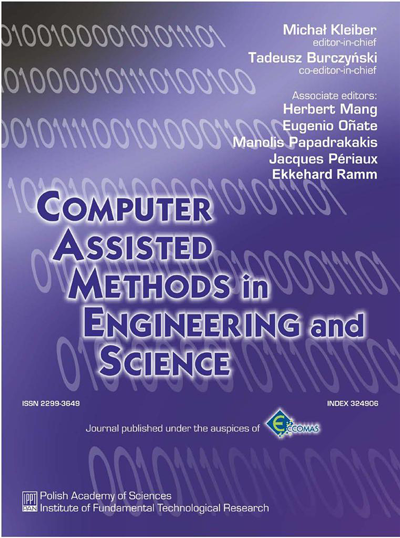Coupling of CFD and lumped parameter codes for thermal-hydraulic simulations of reactor containment
Abstract
The work deals with thermal-hydraulic analyses of a pressurized water reactor containment response to accidents caused by a rupture of primary circuit. The in-house system computer code HEPCAL-AD and CFD ANSYS Fluent have been coupled for these simulations. The aim of this work is verification of possible ways of the codes coupling. The assessment of each method has been done by comparing the computational results with experimental data obtained from testing rigs of the AP-600 reactor containment cooling system. Additional simulations of a loss-of-coolant accident (LOCA) have been carried out as well, and compared with outcomes of the AP-600 reactor simulator.
Keywords
reactor containment, thermal-hydraulic analysis, lumped parameter code, CFD code, coupling,References
[1] OECD/NEA. State-of-the-art report on containment thermalhydraulics and hydrogen distribu- tion. CSNI, Paris 1999.[2] International Atomic Energy Agency. Use of computational fluid dynamics for safety analysis of nuclear reactor systems. IAEA TecDoc No. 1379, IAEA, Vienna, 2003.
[3] K. Fischer, P. Royl, M. Heitsch, A. Lukianov, N. Sato, M. Babic, M. Houkema, L.E., T.L. George, C.L. Wheeler, S. Paci. International Standard Problem ISP-47 on Containment Thermal-Hydraulics. Step 2: ThAI. Volume 4: Comparison Report of Open Phases I, II, III and IV. Becker Technologies GmbH, Eschborn, Report Nr. BF-R 70031-4, 2005.
[4] M. Houkema, N.B. Siccama, J.A. Lycklamaà Nijeholt, E.M.J. Komen. Validation of the CFX4 CFD code for containment thermal-hydraulics. Nuclear Engineering and Design, 238, 2008.
[5] International Atomic Energy Agency. Status of advanced light water reactor designs 2004. IAEA TecDoc No. 1391, IAEA, Vienna 2004.
[6] T. Bury. Analysis of thermal and flow processes within containments of water nuclear reactors during loss-of-coolant accidents. PhD thesis, Institute of Thermal Technology, Silesian University of Technology, Gliwice, 2005.
[7] A. Fic, J. Skorek. Mathematical model of transient thermal and flow processes in containment of a PWR nuclear reactor. Archiwum Energetyki, 1–2: 1993.
[8] J. Skorek, J. Składzień. Thermal Analysis of the Loss-of-Coolant accident within the containment of theWWER-440 and WWER-1000 nuclear reactors. Computer Assisted Mechanics and Engineering Sciences, 1(3/4): 1994.
[9] M.D. Kennedy, J. Woodstock, J.A. Gresham. Westinghouse-GOTHIC comparisons to AP600 passive containment cooling tests. Westinghouse Electric Company, Pittsburgh, 1995.
[10] J.G. Sun, W.T. Sha. Development of liquid-film tracking models for analysis of AP-600. Proceedings of ASME Winter Annual Meeting, New Orleans, 1993.
[11] W.T. Sha, T.H. Chien, J.G. Sun, B.T. Chao. Analysis of large scale tests for AP-600 Passive Containment Cooling System. Proceedings of the Second International Topical Meeting on Advanced Reactor Safety ARS’97, Orlando, 1997.
[12] International Atomic Energy Agency: Pressurized Water Reactor Simulator. Workshop material, Training course series No.22, IAEA, Vienna, 2003.
Published
Jan 25, 2017
How to Cite
BURY, Tomasz.
Coupling of CFD and lumped parameter codes for thermal-hydraulic simulations of reactor containment.
Computer Assisted Methods in Engineering and Science, [S.l.], v. 20, n. 3, p. 195-206, jan. 2017.
ISSN 2956-5839.
Available at: <https://cames.ippt.gov.pl/index.php/cames/article/view/66>. Date accessed: 31 may 2025.
doi: http://dx.doi.org/10.24423/cames.66.
Issue
Section
Articles




